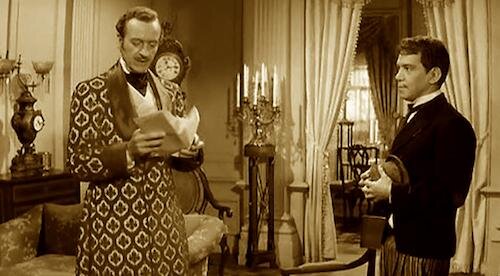Around the World in 80 Days
This review is a part of the Best Picture Project: a review of every single Academy Award winner for the Best Picture category. Around the World in 80 Days is the twenty ninth Best Picture winner at the 1956 Academy Awards.
Forget the run time, the premise, and the large, large, large cast. There really isn’t much to Michael Anderson’s wacky global adventure film Around the World in 80 Days. We start off with a risky bet: man-about-town Phileas Fogg places money on his claim that he can travel the name of the film (I don’t feel like going into that all that often; it’s self explanatory). He floats away with his valet; and away they go. Most of this experience is spotting celebrity cameos, cultural stereotypes, and irrelevant gags. I interpret the cameos as Anderson’s way of keeping audiences glued to the screen, and have them realize just how small the world really is. These cameos include Frank Sinatra, Cesar Romero, Marlene Dietrich, Peter Lorre, Buster Keaton, Evelyn Keyes, and many, many more. The other two frequent elements are inexcusable, even arguably so by 1956 (never mind now). The stereotypes are lazy and insensitive, and the gags feel like a waste of time.
The latter point is mainly because of how the film progresses, and eventually resolves. The pacing feels wonky, first and foremost. However, we stay watching, because of the wager. It’s all about the wager! Can Fogg get to his final destination in eighty days? How can it be so? Well, the final scene — after three hours of traveling — feels like a fart in the wind: a shrug narratively, and a slapstick joke that feels like the “ta-da” after your uncle told the worst pun at your family barbecue. If anything, story wise, Days feels like a useless effort, especially because of this half-assed ending, which kills everything that preceded it.
Fogg and Passepartout embarking on their journey.
So, how is this a three starred film? To be honest, the actual touring of the world saves the entire picture. Lionel Lindon’s cinematography feels so ahead of its time; some of the images simply cannot be from 1956. When you actually travel around and witness all of the sights of the world, Days is a magnificent and overwhelming film. During the more silly moments, we have Mexican legend Cantinflas making the most of these scenes. David Nivens does his best to sew together all of the storytelling scenes; a less-refined actor could have made the entire film unbearable, all things considered. So, yes. There is worth in Around the World in 80 Days. You just have to know what you are in for. Lots and lots of eye rolling when you aren’t staring at the jaw dropping photography of the world’s own artworks.
Don’t get me started on that insane remake, either. This one is mediocre enough.
Andreas Babiolakis has a Masters degree in Film and Photography Preservation and Collections management from Ryerson University, as well as a Bachelors degree in Cinema Studies from York University. His favourite times of year are the Criterion Collection flash sales and the annual Toronto International Film Festival.





